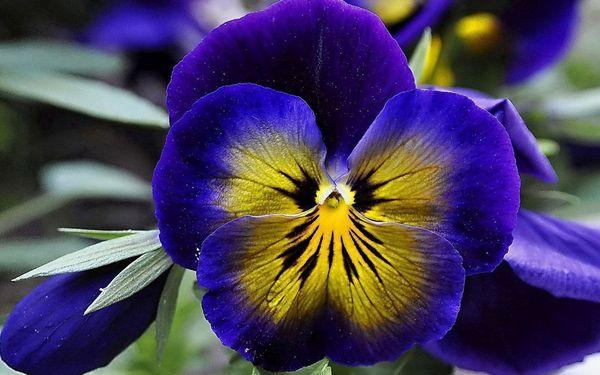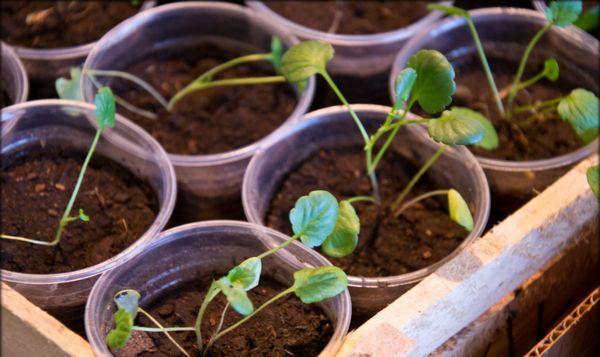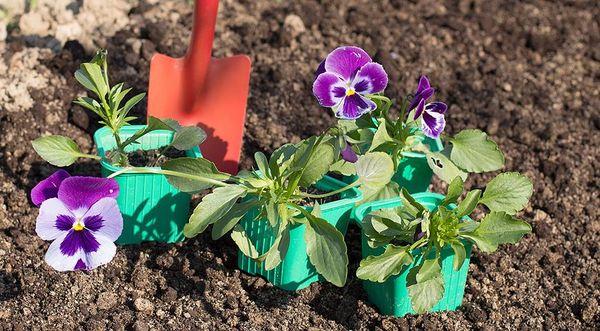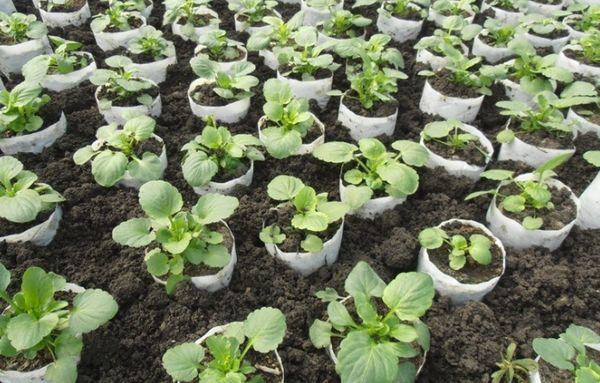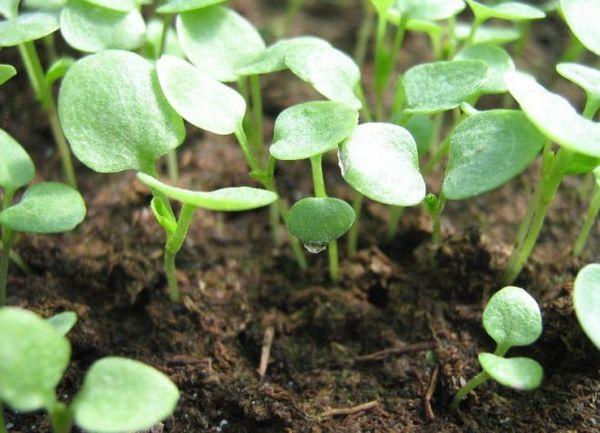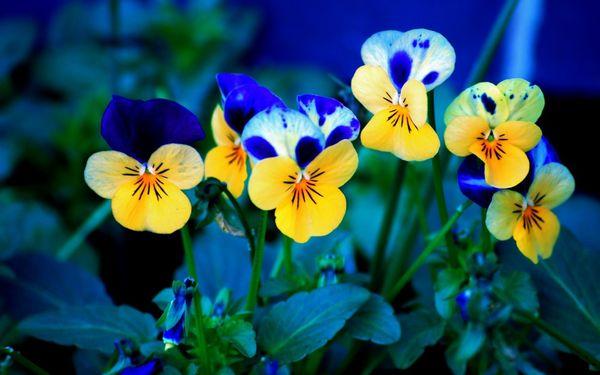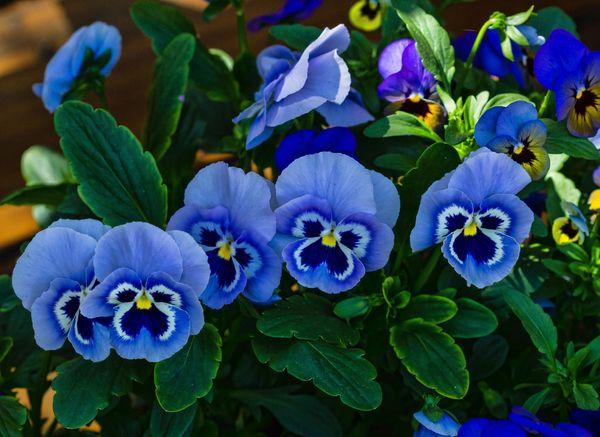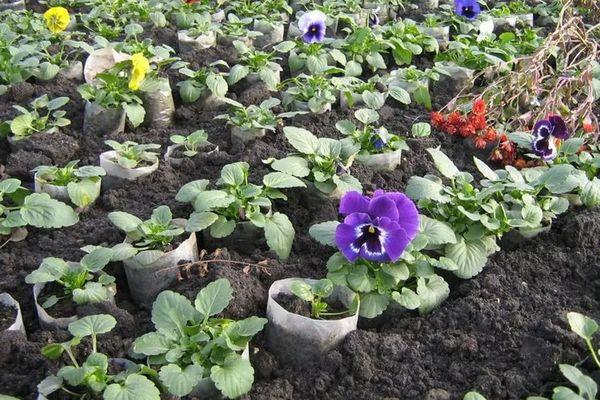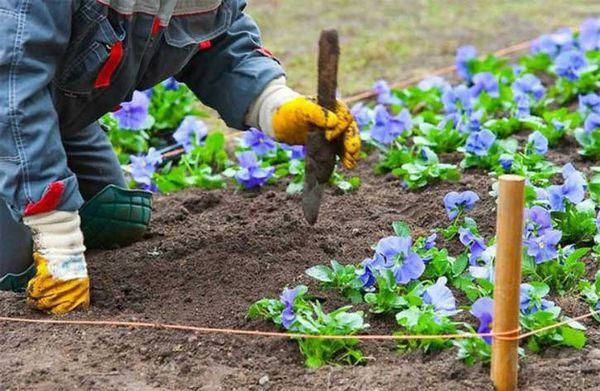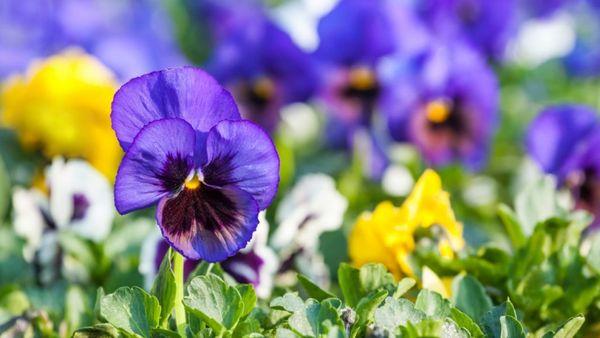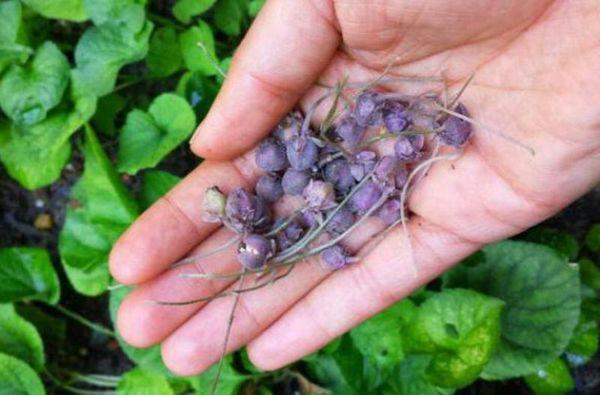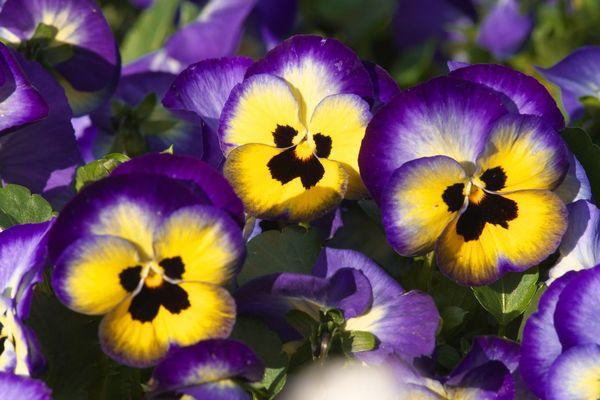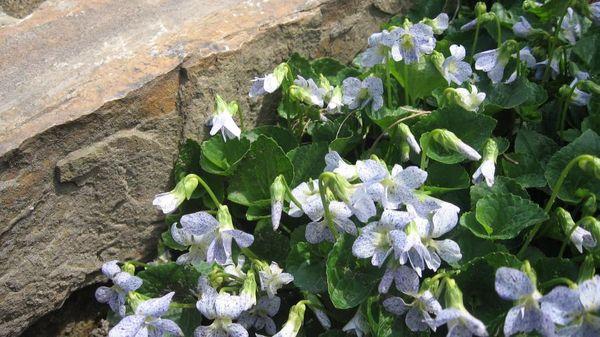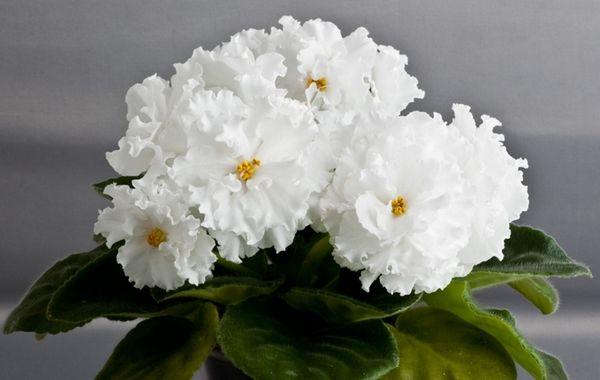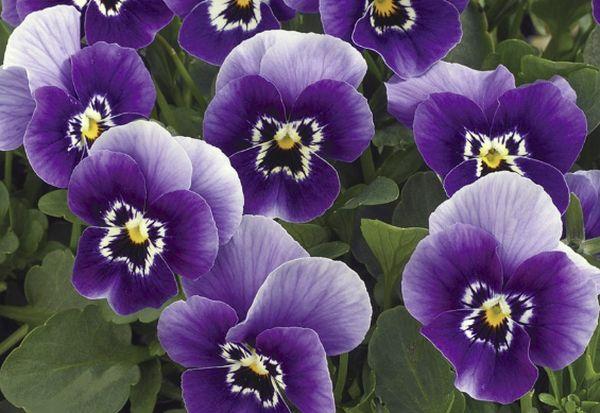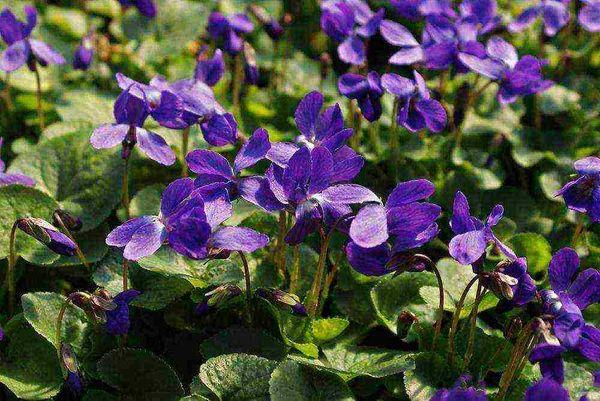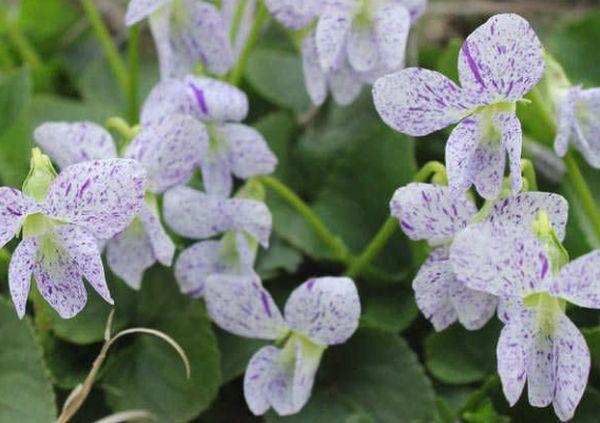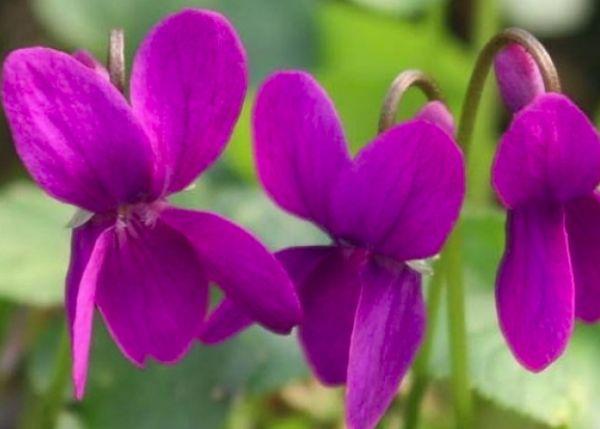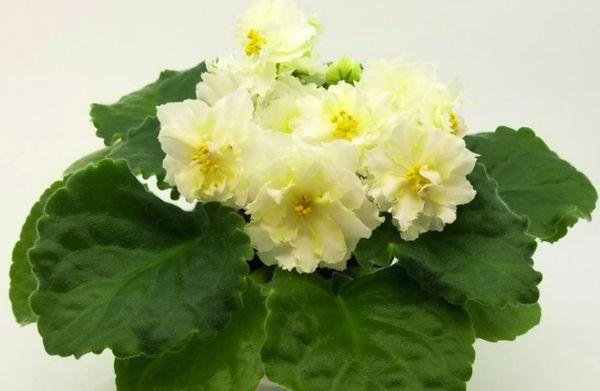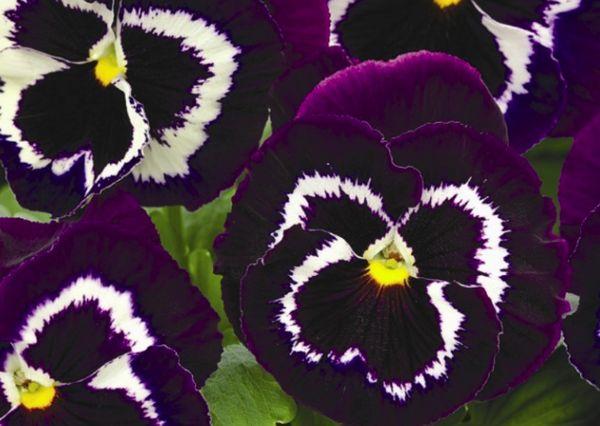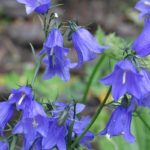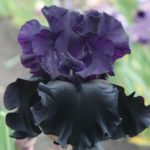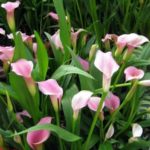Cute and gentle Pansies decorate most summer cottages. Low bushes with bright variegated flowers enliven the view and are pleasing to the eye. Viola is a favorite of flower growers; it is valued for its unpretentiousness and long-lasting decorative properties. Let's look at the details of growing Pansies - planting and care, choosing a variety, as well as the main problems of inexperienced gardeners.
- Description and features
- Growing seedlings
- How to plant correctly
- Soil selection
- Seed preparation
- Deadlines
- Watering
- Top dressing
- Picking
- Topping
- Planting in open ground
- Selecting a location
- Soil requirements
- How to plant
- Care
- Watering
- Loosening and weeding
- Trimming
- Top dressing
- Wintering
- Transfer
- Main problems
- Seeds don't sprout
- The shoots are thin and lie down
- The seedlings withered as soon as the glass was removed
- Reproduction
- Cuttings
- Self-seeding
- Diseases and pests
- Powdery mildew
- Gray rot
- Blackleg
- spotting
- Caterpillars of clover armyworm and violet pearl moth
- Collection and storage of seeds
- Kinds
- Wittrock
- Single color
- Bicolor
- Spotted
- Horned
- Fragrant
- Moth
- Small-flowered
- Large-flowered
- Cornuta
- Popular varieties
- White
- Blue boy
- Rua de Negri
- Red
- Jupiter
- Beaconsfield
- Saint Canute
- Shalom Purim
- Tiger Eyes F1
- Cassis F1
- Arkwright Ruby
- Balmont Blue
- Purple Duet
- Rosina
- Charlotte
- Tsar
- Freckles
- Royal Robe
- Red Giant
- Hansa
- Caesar
- Red charm
- La France
- Rumba
- Pearl Falls
- Sparkler
- Amber Kiss
- Froze chocolate
- Bambini
- Cats
- Mammoth
- Use in landscape design
Description and features
Pansies are flowers called viola, belonging to the violet family. Other names are violet, viola tricolor, Ivan da Marya. All the names have firmly taken root; the flower has long been grown in summer cottages, flower beds, in pots and flowerpots.
Natural types of viola came from the northern hemisphere and have been known since ancient times. Pansies are loved for their long flowering, unpretentiousness, brightness, and exquisite simplicity. They are able to decorate an area with a colorful carpet; their cheerful appearance pleases the eye and lifts the mood.
Garden violets are herbaceous plants, cultivated as annual, biennial or perennial.
The viola bush grows up to 10-30 centimeters, the leaves are simple or dissected. The flowers are solitary, occasionally collected in small inflorescences (tassel, panicle, spike). The fruit is a capsule with a large number of seeds.
By crossing natural species, breeders have obtained many varieties and hybrids. In recent years, F1 hybrids have become more common.They bloom for a long time, get sick less, and remain decorative for several months. The flowers are even, absolutely identical in color.
Old varieties of viola, with a long flowering period, gradually became paler and smaller; hybrids are as good in the fall as at the beginning of the season.
Natural types of viola are colored yellow, white and purple; as a result of selection, the color of flowers has expanded. Multi-colored varieties appeared, with strokes, specks, and borders. The colors of the petals are very different - orange, pink (Northern Lights), purple (Red Giant), almost black.
During the selection process, viola varieties with simple and corrugated petals, double and semi-double flowers were created. By removing faded buds, you can extend the flowering period. High frost resistance allows you to grow Pansies in any region.
Viola varieties with large (up to 10 centimeters) flowers are especially popular. Small-flowered species delight with a large number of buds, which almost completely hide the greenery.
Growing seedlings
For early flowering, it is better to plant pansies as seedlings. Most species tolerate replanting even with buds and flowers. Many gardeners, when planting is delayed, admire the bright violets at home.
How to plant correctly
For planting violas, use new or used containers 10 centimeters deep, carefully treated with fungicides. A drainage layer is laid on the bottom, the soil is lightly compacted, spilled and left until the moisture is completely absorbed. Small grooves (up to 5 millimeters) are made on the surface. Dry viola seeds are scattered from a pinch or from a sheet of paper into the ground, trying to maintain a distance of 0.6-1 centimeter.
Cover with dry soil, rubbing it in your palms. Water with warm water from a spray bottle.The container is covered with film or glass and left in a dark place at a temperature of 15-20 °. Viola shoots appear in 6-10 days.
Soil selection
Ready-made soil mixture for violets is the best choice for planting. When preparing the soil for viola yourself, combine humus, peat, sand and fertile soil in equal parts. Before using your own soil, it is disinfected by calcination or freezing.
Seed preparation
Pansy seeds are small and difficult to work with. Most people plant seed without germination, since viola sprouts are easy to break. Before planting, the seeds are soaked for an hour in a solution of a stimulant - Zircon or Epin. Next, they are dried by laying them out on paper.
Deadlines
For early planting of viola in the ground, sowing is carried out in February, for cold regions - in early March. Even if you have to plant pansies with flowers and buds, rooting will take place quickly. To obtain early-flowering varieties, the seeds are sown in the summer, directly into the ground, so that the bushes have time to take root and strengthen. In this case, in April the pansies from last year's planting will bloom.
Watering
After germination, the containers are transferred to a lighted place. Watering is carried out as the soil dries out - pansies do not tolerate excess moisture and puddles. Water carefully, at the root, with a small watering can or sprayer.
Top dressing
Violas need fertilizing no more than once every 2 weeks. Use special fertilizers for violets or ordinary mineral complexes with potassium, phosphorus, and nitrogen. It is important not to exceed the standards recommended in the instructions.
Picking
Picking Pansies is carried out when growing 2 leaves. The seedling is removed from the container with a lump of earth, and the central root is carefully trimmed.This stimulates the growth of lateral roots and rapid establishment.
Overgrown seedlings can be pricked again, deepening them to the leaves and without bending the roots.
Topping
After 4-6 permanent leaves have grown, the top of the viola is pinched to form side shoots. This is done in the absence of sun, at a temperature of 15-18 °.
Planting in open ground
The timing of planting Pansies depends on climatic conditions and weather. In order not to destroy the seedlings, wait for persistent heat. For cultivation on loggias and balconies, they can be planted in April; viola seedlings are transferred to open ground in May-June.
Many people sow pansies directly into the ground. This is advisable in the following cases:
- for early flowering next year - sowing in July-August;
- for flowering in late summer-autumn - sowing in May-June.
When sown in the ground in May, some varieties of Pansies bloom before the snow, and the next year they bloom in April.
Selecting a location
Pansies bloom well in partial shade and sun. Features of growing viola in different conditions:
- in constant sun, in the heat, flowering may stop until autumn;
- in shaded places the flowers are smaller, but flowering is not interrupted; the area should be in the sun for 5-6 hours.
Pansies love drained soils without stagnant water; in places where puddles accumulate, the roots can rot.
Soil requirements
The soil for violas is prepared in advance, the beds are dug up, and watered with fungicides. Humus, sand, and peat are added to the soil. Fresh manure is not used. The acidity of the soil is neutral; pansies do not like excess sand.
How to plant
Pansy plantings should not be thickened - the recommended distance between flowers is 15-30 centimeters, depending on the size of the bush.With closer proximity, crowding contributes to poor ventilation, fungal diseases develop, and pests spread more easily. When planting viola in containers, the plant requires 1-2 liters of soil.
If you sow seeds in the ground, it is important not to cover them with too much soil. The soil needs to be kneaded well, it is better to sift it.
Care
In order for the viola flowers to be large and bright and the bushes to produce many buds, it is important to follow the rules of care.
Watering
Watering is carried out with warm water in the morning or evening hours. In hot weather, bushes can be sprayed when there is no sun. Violas do not like stagnant water - you need to water them sparingly, waiting for the soil to dry out.
Loosening and weeding
Weeding ensures air flow to the viola roots and improves the growing season. Loosen the soil around the plants regularly, removing weeds and dead parts of the bushes.
If the summer is hot, the Pansy beds are mulched with organic matter to retain moisture.
Trimming
Old viola bushes need to be pruned in time to start a new growing season. Cut off all old shoots, leaving 5-6 centimeters with leaves. The bush will quickly grow and produce buds. To ensure continued growth of buds, wilted flowers are removed without allowing the seed pods to grow.
Top dressing
The bushes are fed 2-3 times per season. Choose mineral complexes or individual fertilizers with potassium (potassium nitrate), phosphorus (superphosphate), and nitrogen. It is useful to use biological products for root and foliar feeding, Agricola.
Important: organic matter is not used for violets.
Wintering
Preparing pansies for winter is not difficult. The bushes need to be pruned at the beginning of a cold snap; watering and fertilizing are not required. Perennial varieties of viola have good winter hardiness. To insulate them, they are covered with spruce branches, dry hay or leaves.Synthetic materials are not used. It is important to remove the insulation in early spring to prevent rot.
Transfer
Transplantation is used to rejuvenate the crop and transfer it to a more convenient place with better conditions. Viola should not be grown in one place for a long time.
Pansy bushes are dug up in early spring, when there is no active growth. The beds and soil need to be prepared in advance. Some gardeners divide the bushes, although there is a risk of destroying the plant completely. In the fall, the viola is not replanted so as not to weaken before frost.
Main problems
Let's look at the most common problems when growing pansy seedlings.
Seeds don't sprout
The reason for the lack of viola seedlings may be:
- non-viable seeds;
- excessive penetration into the soil;
- heavy soil.
You have to be patient - sometimes sprouts appear within a month. If you want to sow new seeds, you need to take these errors into account.
The shoots are thin and lie down
The main reasons for the thinning of viola sprouts:
- Planting density. The plants are cramped and there is not enough space. Thinning is carried out very carefully.
- Lack of light. In low light conditions, you need to use electric lighting for Pansy seedlings.
Plants may not have enough nitrogen, they weaken and fall. Fertilize with nitrophoska (NPK complex).
The seedlings withered as soon as the glass was removed
When the cover is removed from the viola, the water balance and temperature around the seedlings change. The microclimate inside the greenhouse is different than in the room. It is necessary to establish proper watering and move the containers to a cool place without direct sunlight.
Another cause of wilting can be root rot that has spread from contaminated soil. It is necessary to inspect the viola sprouts and, if necessary, water them with fungicides.
Reproduction
Like most plants, viola is propagated by seeds and vegetatively.
Cuttings
Planting viola cuttings allows you to propagate hybrid varieties, completely preserving the maternal properties of the crop.
For cuttings, take terminal shoots with 2-3 nodes. The bed is made in a shaded place. The soil is prepared, enriched with humus and mineral fertilizers, and well moistened. Viola cuttings are planted tightly, deepened a centimeter so that the foliage of neighbors touches. Increase humidity by making a greenhouse shelter.
The appearance of new leaves indicates rooting. Ready viola seedlings are transferred to a permanent place. This is how old plantings of Pansies are rejuvenated.
Self-seeding
The life of a viola flower ends with the formation of a seed box. When scattering seeds, the plantation increases due to self-seeding. Note that hybrids do not reproduce in this way.
Young shoots of Pansies from discarded seeds often do not have high decorative properties. Many gardeners pluck off faded buds to increase flowering time and give the plant strength without producing seeds.
Diseases and pests
Most viola diseases are fungal in nature and develop with excess watering, the wrong site or rainy summer.
Powdery mildew
Whitish spots on the foliage of Pansies indicate powdery mildew infection. They gradually increase in size and can cover the entire plant. The diseased bush is removed. The remaining violas are treated with folk remedies or fungicides.
Gray rot
The fungal infection affects stems, foliage and flowers. First, gray-brown spots appear on the lower old leaves; if left untreated, they spread to the entire viola bush. To eliminate, use fungicides and regulate watering.
Blackleg
It most often affects young bushes. Identified by a dark ring on the stem near the soil. The stem rots, the bush falls over. Sick violas are isolated and treated with fungicides and biological products.
spotting
Spots appear on different parts of the leaf, it curls and dries out. A diseased specimen of viola is dug up. The rest are treated with Bordeaux mixture 2-3 times.
Caterpillars of clover armyworm and violet pearl moth
If holes appear on the leaves of the viola, these are signs of the plant being eaten by pests. The bushes are inspected and the caterpillars are removed manually. When there are a large number of pests, insecticides are used. Tobacco infusion is used as a folk remedy.
Collection and storage of seeds
Viola seeds are collected from fully ripened seed pods. They appear in place of faded buds in August-September. You need to wait until the box dries and opens. The collected seeds are dried at home and stored in the refrigerator.
Help: if the seeds are not collected, viola reproduces by self-sowing. The plantings become thicker and the bushes interfere with each other.
Kinds
More than 500 species of viola are known. Breeders have created many varieties and hybrids that have large flowers, bright colors, and resistance to frost and disease.
Wittrock
Natural species are found in temperate climate zones. The main difference is the real eye in the center, which gives the flowers their name. A small bush grows up to 15-40 centimeters, the diameter of the flowers is 5-10 centimeters. Terry and simple varieties of this species are cultivated. They often grow like biennials.
Single color
It is found naturally in the Far East and Siberia. It has a slightly recessed rhizome, from which leaves and bright yellow flowers grow in the spring. The flower lives for 2 weeks, the bush continues to develop until mid-August, then retires until spring.Popular varieties are Blue Boy, Viola White.
Bicolor
Bicolor violas combine tones that are similar in color, the petals are differently colored, the upper ones are usually lighter than the lower ones. Varieties - Jupiter, St. Canute.
Spotted
Spotted species are often distinguished by their outlandish coloring with individual specks and stripes along the edges. The colors of the petals are the most unusual, often contrasting. There are many hybrids popular among gardeners.
Horned
The bushes spread along the ground and form a carpet. The stems are triangular, the foliage is serrated, up to 6 centimeters. The main feature is a small bent petal (horn) at the bottom of the flower. There are many flowers, diameter - 3-5 centimeters, color - violet-lilac with a yellow center.
Information: flowering of many varieties of viola lasts from May to September.
Fragrant
Perennial plant with a pleasant aroma. The foliage is rounded and very large. Flowers in purple shades. In nature, it blooms in May for about 20 days, and often blooms again in the fall, after resting.
Moth
Viola moth produces single flowers. The color of all petals, except the top one, is purple, the center is white-yellow. The upper petal is white, with a lilac stripe in the center. Long flowering - April-June.
Small-flowered
Species and varieties with small flowers usually bloom profusely, the bushes are strewn with buds. There are up to 15-20 flowers on the plant. They are cute, look great in tall vases and planters, and create fields with lots of bright spots.
Large-flowered
Varieties with large flowers are a priority for many summer residents. Breeders have worked to create large-flowered varieties and hybrids:
- Spring Matrix Block Mix;
- Morpheus;
- White;
- Cats.
Flowers grow up to 9-11 centimeters and decorate borders and alpine slides well.
Cornuta
Viola cornuta, also known as horned, is distinguished by the presence of a separately located spur on the lower back side of the flower. Some hybrids do not winter well and cannot withstand severe frosts. Hybrids are colored red, orange, yellow; varieties are usually in purple tones.
Popular varieties
The most popular varieties include Pansies with a long flowering period and bright, intricately colored flowers.
White
An elegantly simple flower with snow-white petals. It is enlivened by a small yellow core. The representative of the species is Wittrock. Blooms well in sun and shade. Easily survives transplantation in the flowering state.
Blue boy
On low bushes (up to 15 centimeters) there are bluish-blue flowers with a yellow core.
Rua de Negri
It is characterized by long flowering, which, under favorable conditions, lasts from May to October. The yellow eye in the center stands out brightly against the very dark velvet background. The flower size is 4-6 centimeters, the petals have a small flounce along the edge.
Red
Lovers of red flowers will appreciate this variety of Pansies. The petals are a rich red color, on which the dark center is almost invisible. The size is impressive - almost 7 centimeters.
Jupiter
Small bushes are strewn with flowers (up to 12-17 pieces). The bright purple center of the petals is surrounded by a white border that widens at the top of the flower. It is pleasing to the eye all summer long and survives the winter well.
Beaconsfield
Lord Beaconsfield has two types of petals. The lower ones are deep purple, with an even darker middle, the upper ones are white, with lilac veins. They bloom for a long time, maintaining brightness and contrast.
Saint Canute
The bush blooms with a large number of flowers (up to 20). The color of the petals is different - a combination of different tones of orange and red.
Shalom Purim
A fancy violet that combines orange-red and purple tones.Flowers with ruffled petals, thick and full. More luxuriant when grown in the shade.
Tiger Eyes F1
Amazing brindle flowers. On a yellow-orange background there are dark stripes that densely cover all the petals. The yellow core is surrounded by an equally dark circle. Flowers with a diameter of 3-4 centimeters strew the small bush.
Cassis F1
Lovers of dark tones will appreciate the Cassis hybrid. A thin white border runs along the edges of the dark purple petals, bringing the flower to life. Winter-hardy hybrid.
Arkwright Ruby
The flower is a bright red color with a very dark spot on the lower petals. Looks great in combination with light Pansies.
Balmont Blue
An excellent option for lovers of blue violets. The color of the petals ranges from blue to bright blue. There are veins of a darker or lighter tone. A beautiful climbing bush with a large number of shoots.
Purple Duet
The upper and lower petals of the viola differ in color. Together they form a beautiful pink-burgundy flower.
Rosina
An elegant flower with bent petals, looking like a small bird in flight. Color – pink, thickening towards the base. Smells nice.
Charlotte
A perennial with a low bush that grows up to 15 centimeters. The color of the petals is purple. It blooms better in sunny areas; in shading, the number of buds decreases.
Tsar
A popular variety with fragrant light purple flowers. In flower beds they are grown in a group with other plain violas.
Freckles
One of the most unpretentious varieties of Pansies. Blooms in May. Purple specks run across the white field of petals. The bushes grow up to 20 centimeters.
Royal Robe
The color of the petals of this viola variety varies from light purple to deep purple.The center of the petals is shaded with light and dark lines. The petals are slightly bent towards the stem.
Red Giant
Viola Red Giant is suitable for lovers of purple-red shades. Flowering starts in June and lasts all summer, until September. Pansies stand beautifully on long stems, towering above the bush.
Hansa
The medium-sized bushes of Hansa are dotted with bright blue flowers of simple shape, thin and graceful.
Caesar
The fragrant flowers of Caesar have purple petals, the bush is low, and the flowering period is long.
Red charm
The petals are a distinct red-purple color, with small veins of a darker tone, the middle is yellow. The stem is creeping, takes root easily, and young bushes develop quickly. Smells pleasant and can grow in the shade of trees. Blooms in late spring and autumn.
La France
La France flowers have a classic shape, a deep purple hue, and a yellow center. They quickly occupy the entire area of the pot and grow well.
Rumba
The bushes grow up to 25 centimeters. The flower is large, the color of the petals varies, and the seeds are often sold as a mixture.
Pearl Falls
An excellent option for hanging in flowerpots. An abundance of flowers and bright greenery fill the walls of the pots. The color of the petals is white and purple. The edges and middle are dark, white spots in the center of the petals. Blooms until late autumn.
Sparkler
An ampelous variety, looks good in flowerpots and on alpine slides. The color of the petals is yellow and burgundy.
Amber Kiss
The leader in popularity among lovers of warm shades. Viola Amber Kiss is painted in an unusual bronze-orange color. It has a long flowering period and is used for cultivation all year round. Flowers - 3.5-4.2 centimeters.
Froze chocolate
The flowers of this hybrid are yellow-chocolate in color and grow up to 3 centimeters. The bushes are even, do not stretch upward, and form a thick mat on the flower beds. They tolerate high temperatures well and bloom profusely in the shade.
Bambini
Children will love Bambini's cheerful flowers. On the light field of the petals, eyelashes are drawn in the form of dark strokes. The color of the petals varies in white and yellow. The flowers are small and bloom in May-June.
Cats
Cats blue pansies have a complex blue coloration. The upper petals are of a lighter shade; the lower petals have blue strokes that look like veins. The bright yellow center enlivens the blue palette. The flowers are large - 9-10 centimeters, flowering lasts from June to October.
Mammoth
The Mammoth series of violas is distinguished by a wide variety of colors. All species are large-flowered and grow up to 9-10 centimeters. Among the representatives there are pansies of one color (white, red, purple) and with fancy patterns (Pink Berry).
Flowers of the Mammoth series are resilient, grow quickly, and easily tolerate drought.
Use in landscape design
Bright meadows of Pansies can decorate any flower bed or free area in the country. They enliven the area and look great in flower pots on balconies and loggias.
Varieties with small flowers are planted in large carpets, combined with other plants in tone. White violas harmonize with red peonies and crocuses, lilac ones with daisies. Alpine slides, ridges, rockeries become more cheerful from Pansies. Violas are planted as a border. They are combined with the greenery of ornamental bushes and dwarf conifers.
Viola is a wonderful decoration for the site.Growing does not require special knowledge; busy people who come to their dacha once a week and hard workers who work every day can take care of Pansies. A wide variety of colors, funny appearance and unpretentiousness make the viola a universal favorite.

